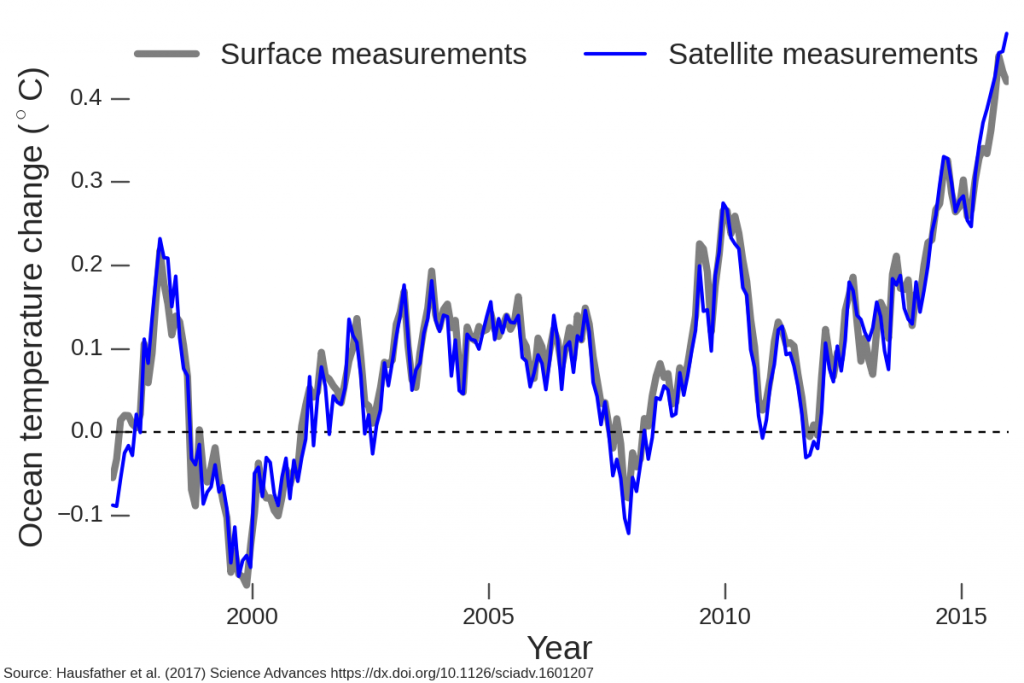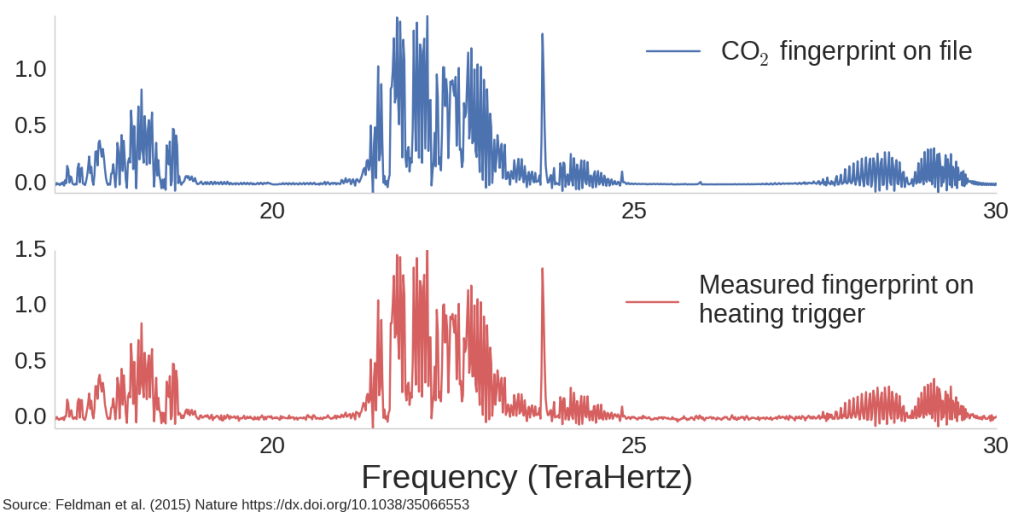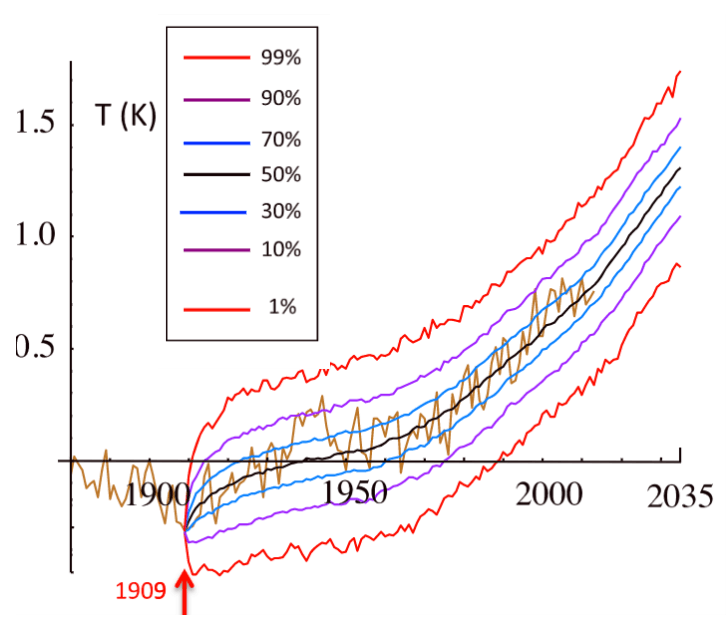
Inadequate Support: Based on multiple lines of evidence, scientists have concluded that human activities are clearly the dominant cause of climate change.

REVIEW
CLAIM: There's no question about it. Climate change is not happening, there is no significant man-made global warming now, there hasn't been any in the past, and there's no reason to expect any in the future.
Stephen Po-Chedley, Research Scientist, Lawrence Livermore National Laboratory:
[This comment is taken from an earlier review of a similar claim.]
This claim is not accurate. Global temperature datasets, developed by a number of independent research groups, show robust warming in the troposphere and at the Earth’s surface. The radiative effect of carbon dioxide has also been observed[1]. Considering multiple lines of evidence, the IPCC concluded that it is “extremely likely that human influence has been the dominant cause of the observed warming since the mid-20th century.” More recent analysis of satellite data shows that tropospheric warming from the satellite record is pronounced and cannot be explained by natural climate variability alone[2].
- 1 – Feldman et al (2015) Observational determination of surface radiative forcing by CO2 from 2000 to 2010, Nature
- 2 – Santer et al (2017) Tropospheric Warming Over The Past Two Decades, Scientific Reports
Baird Langenbrunner, Associate Editor, Nature Climate Change:
[This comment is taken from an earlier review of a similar claim.]
If we’re assuming [Coleman is] talking about Earth since the industrial revolution, when humans started ramping up fossil fuel burning, then he’s quite wrong. There has been very clear and measurable warming since this time period—this has been confirmed time and time again using station data and satellite measurements and it matches well with predictions based on increases in greenhouse gas concentrations. Even in the brief periods when the surface temperature warms less quickly, the oceans continue to warm, which together with the atmosphere accounts for all the extra heat predicted by increased greenhouse gas concentrations.
First, greenhouse gases are well studied, and their properties are nonnegotiable: They absorb and re-emit longwave radiation, whether they’re in a laboratory setting or in the real atmosphere. To back this up with historical evidence, scientists have known since the 1860s that CO2 is a greenhouse gas and since the 1890s that this will affect the heat budget of the Earth through warming. Even then, these claims were based on empirical evidence, and they’re supported by decades of laboratory research.
Second, the link between increased greenhouse gas concentrations and warming continues to be supported by research in the last two decades. One study from 2001[1] used satellites to measure the type of energy entering and exiting Earth’s atmosphere and concluded that increases in greenhouse gases were responsible for extra heat measured between 1970 and 1997. The authors state that their results “provide direct experimental evidence for a significant increase in the Earth’s greenhouse effect that is consistent with concerns over radiative forcing of climate.” (Here, the term “radiative forcing” refers to the extra energy trapped in the atmosphere by greenhouse gases, cause warming.) A more recent study[2] arrived at similar conclusions, confirming predictions of the greenhouse effect in Earth’s atmosphere and providing “empirical evidence of how rising CO2 levels … are affecting the surface energy balance.” In other words, rising CO2 was linked directly to warming, even when things like plant uptake of CO2 were considered.
- 1 – Harries et al (2001) Increases in greenhouse forcing inferred from the outgoing longwave radiation spectra of the Earth in 1970 and 1997, Nature
- 2 – Feldman et al (2015) Observational determination of surface radiative forcing by CO2 from 2000 to 2010, Nature
Mark Richardson, Research Associate, Colorado State University/NASA JPL:
[This comment is taken from an earlier review of a similar claim.]
[These] comments would have been fair in 1896 when Svante Arrhenius calculated that we could cause serious global warming[1]. World temperatures measurements began in the 1800s and show a warming burst since the 1970s. Last year we checked with satellite scans of the ocean[2], confirming the accuracy of the surface measurements.

Global warming is measured fact. Working out the culprits has been like Crime Scene Investigation: Physics Edition.
Some evidence comes from a facility in Billings, Oklahoma. Parts of air like water vapour and carbon dioxide naturally glow with infrared heat at very specific frequencies. The Billings site has a device that measured an incredibly precise “fingerprint” of the sky’s heating.
Investigators reported in 2015[3] that they found fingerprints across the sky with a clear match on the heating trigger. Below the blue line is the file fingerprint for carbon dioxide (CO2) heating, which we release into the air when we do things like burn coal & oil. This file fingerprint comes from basic physics backed by precise lab readings.
The red line is the measured fingerprint in the sky over Billings and is a rock solid match. Each spike is extra heat coming down from the extra CO2 molecules that is heating us up. Measurements in Alaska and from satellites[4] confirm this.

This is just one slide in the huge folder of empirical evidence showing human activity to be the main cause of recent warming.
- 1 – Arrhenius (1896) On the Influence of Carbonic Acid in the Air upon the Temperature of the Ground, Philosophical Magazine and Journal of Science
- 2 – Hausfather et al (2017) Assessing recent warming using instrumentally homogeneous sea surface temperature records, Science Advances
- 3 – Feldman et al (2015) Observational determination of surface radiative forcing by CO2 from 2000 to 2010, Nature
- 4 – Harries et al (2001) Increases in greenhouse forcing inferred from the outgoing longwave radiation spectra of the Earth in 1970 and 1997, Nature
Shaun Lovejoy, Professor, McGill University:
[This comment is taken from an earlier review of a similar claim.]
Let’s say you are given only three pieces of information:
a) The annual average value of the global temperature from 1880 to 1909
b) The atmospheric CO2 concentration for each year
c) The effective climate sensitivity
With only this, the temperature over the 104 years between 1909 and 2013 could be incredibly well forecast (black line in the figure below), indeed to about an accuracy of ±0.22 °C (purple lines, 90% confidence limits). This tight limit includes the so-called “pause” of the early 2000s.
Knowing only the CO2 therefore allows us to predict the temperature more than 100 years into the future. Given that the total change over this time was 1.1 °C, the prediction is correct to within 20%. We know that the CO2 was anthropogenic, therefore its increase was not caused by a change of temperature. We can conclude that CO2 is responsible for much of the change in temperature over the last century.
- Figure adapted from Lovejoy (2015), Using scaling for macroweather forecasting including the pause, Geophysical Research Letters



